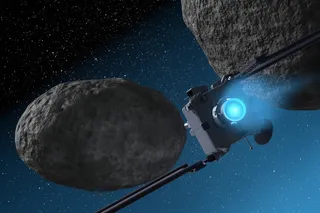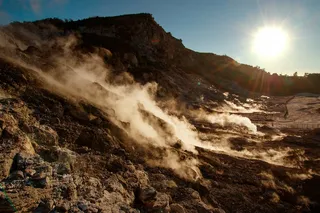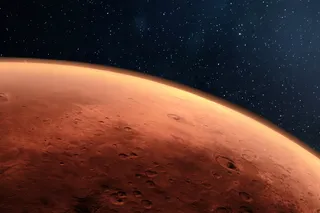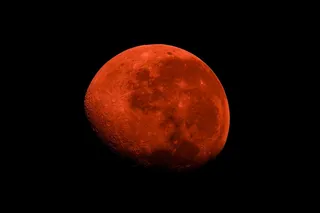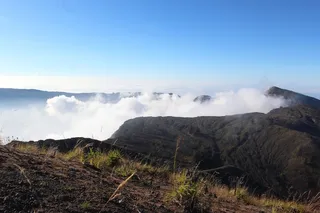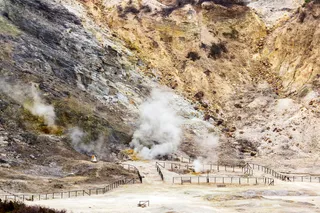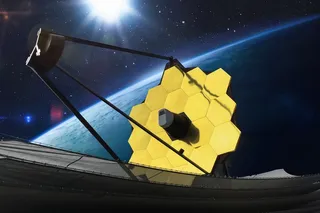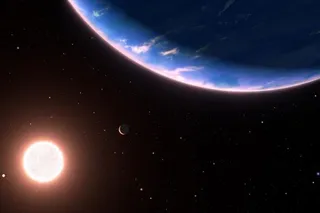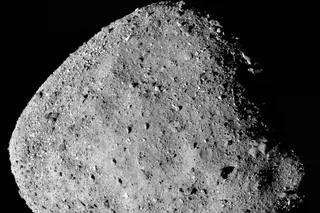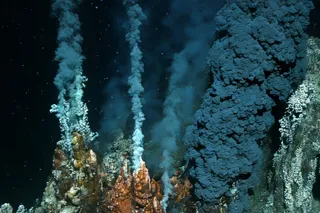So, I said that I was going to try to make MVP #31 a little harder than some of the last few Mystery Volcano Photos, and I was right. In fact, we actually have to split the points for this one between two Eruptions readers - Robin, who gets the main three features and the Bobs who got the distant volcano, which was especially hard. Congratulations to both!
Below is the (now annotated) original image where I asked you to identify not only the scoria cone, but the volcano in the background and the unit in the foreground. Here is what I am sure of: the scoria cone is La Poruña (see top left for another view), the unit in the foreground is the San Pedro Ignimbrite (which Highway 21 cuts through in a drainage) and the near ridge in the background are lava flows from San Pedro. Now, this ...


